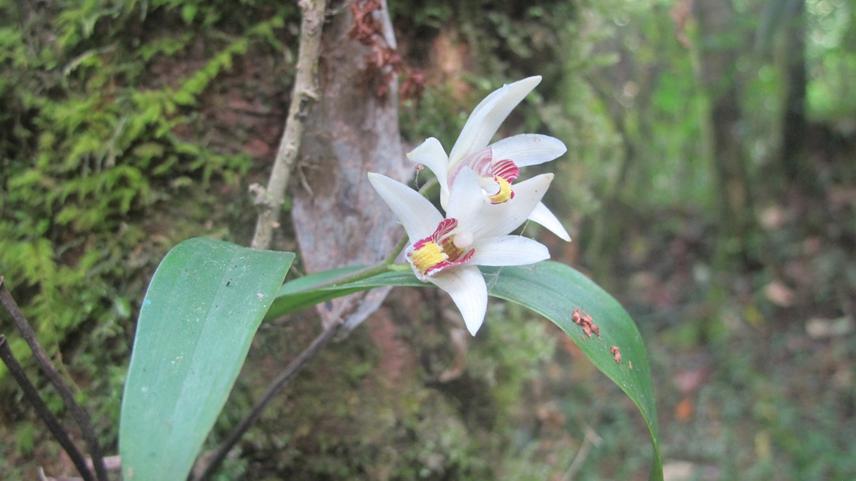Lila Nath Sharma
Main objective of this project is to contribute in the long-term conservation of threatened epiphytic orchids through habitat (host) identification and habitat conservation. Understanding how attributes of host species and individuals determine the orchid diversity and abundance in montane forest is another objective of the project. It will also analyse how forest management activities impact orchid diversity. Project objectives will be achieved through ecological exploration of orchid habitats and diversity, and by disseminating the results to diverse stakeholders through sharing workshops and through publications targeting diverse audience of forest management.

Eria coronaria, an epiphytic orchid species blossoming in winter.
Orchids are among the highly threatened taxa, all the species of orchids are indexed in CITES categories and several of them are IUCN red listed species. Nepal harbors more than 450 species of orchid; over half of them are epiphytic. Certain tree species are more favored hosts than other. However, we do not have downscaled and explicit evidence on how orchid diversity is related to the identity, structure and size of host trees in montane forests of the Himalaya. Above this, some of the management activities of forest users groups are likely to leave negative impacts on orchids and their habitats. In this context, this projects aims to gather empirical data to provide basis for evidence-based management of forest to conserve epiphytic orchids and their hosts, which are highly threatened primarily due to habitat destruction and over exploitation.
Project will gather data through vegetation survey, reviews of literatures, and interviews and discussion with local people and stakeholders related to forest management. Vegetation sampling will be carried out along a vertical transects established along elevational gradient in two montane forests of western Nepal. In each forest at least three transects starting from lower part of the forest to the mountain top will be sampled. Data will be analyzed to assess what attributes of host best predict the orchid diversity. Interviews and discussions will be organized with forest user to understand forest management practices and threat to orchids in their habitat.
The results of the project will be shared to diverse stakeholders—policy makers to local forest user, of forest management through sharing workshops and publication in different media outlets. Outcome of the project is expected to sensitize and inform those policy makers on hotspots of orchid diversity, threats and conservation opportunities.